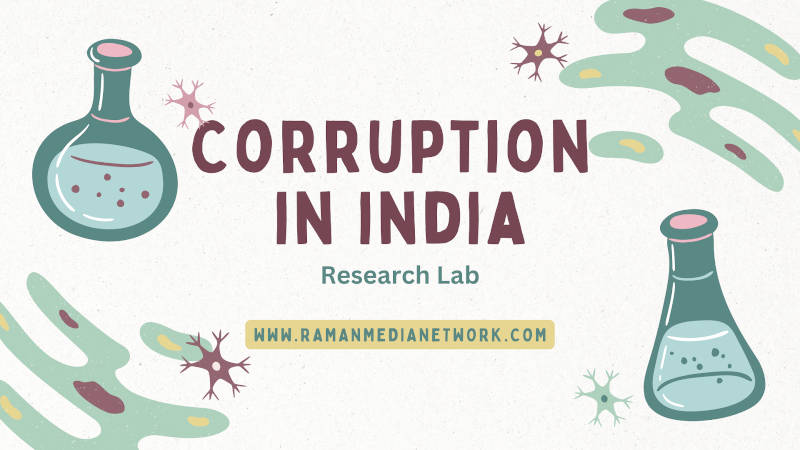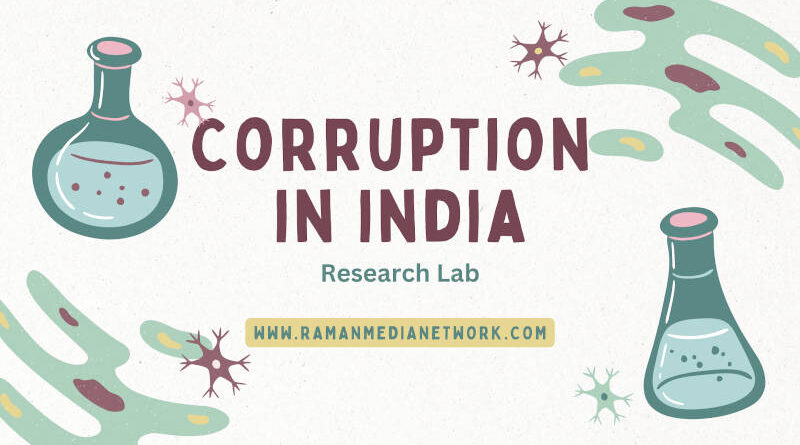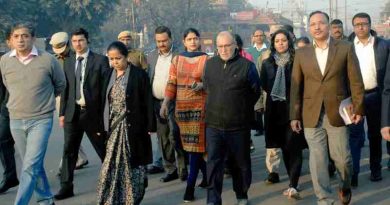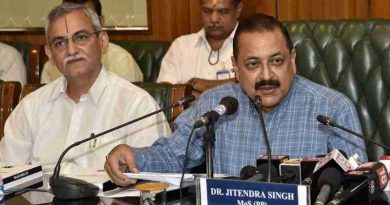Risk Analysis Report: Corruption in Indian Governmental and Judicial Systems

Risk Analysis Report: Corruption in Indian Governmental and Judicial Systems
This analysis has identified significant corruption risks across India’s political, law enforcement, bureaucratic, and judicial spheres. The evidence points to a pattern of malfeasance that extends from high-level political figures and senior civil service officers to the foundational institutions of the judiciary.
By Rakesh Raman
New Delhi | October 20, 2025
1.0 Introduction: Scope and Purpose
This report provides an objective assessment of the landscape of corruption within India’s governmental and judicial systems. The purpose of this analysis is to inform stakeholders of the nature and scale of these risks, drawing on evidence from specific, high-profile cases and systemic findings from recent research reports.
The scope of this report examines corruption risks across three critical domains: the political sphere, law enforcement and the bureaucracy, and the judiciary. By analyzing specific incidents and broader research findings within each of these areas, this document aims to provide a clear and evidence-based overview of the current risk environment.
The analysis begins with an examination of corruption at the highest levels of the political system.
2.0 Political Corruption Risk Analysis
Assessing political corruption is of strategic importance, as malfeasance at this level undermines the integrity of policy-making, distorts economic competition, and poses significant reputational and legal risks for any associated entities. High-profile prosecutions of senior political figures are critical barometers for assessing both the pervasiveness of corruption and the state’s genuine political will to enforce accountability.
Case Study: IRCTC Hotels Corruption Case
A Delhi court has framed charges of corruption, criminal conspiracy, and cheating against former Union Railway Minister Lalu Prasad Yadav in the IRCTC hotels corruption case. This significant legal development also implicates other members of his family who have held high office; the court charged his wife, former Bihar Chief Minister Rabri Devi, and his son, former deputy Chief Minister Tejashwi Yadav, with several offenses in connection with the same case. For stakeholders, this case demonstrates that political risk can extend beyond a single official to encompass dynastic networks, creating long-tail legal and reputational liabilities that can surface years after initial engagement.
Political Landscape Acknowledgment
The political salience of such high-profile cases is not lost on opposition figures. Jan Suraaj Party founder Prashant Kishor’s pledge to crack down on the “100 most corrupt politicians and bureaucrats” is a direct strategic response to the public sentiment fueled by long-running sagas like the IRCTC case, indicating that anti-corruption platforms are becoming a key tool in challenging established political power structures.
Such high-level political malfeasance does not exist in a vacuum; it relies on the complicity of the administrative state. The next section examines the integrity of the law enforcement and bureaucratic bodies tasked with implementing policy and upholding the rule of law.
3.0 Law Enforcement and Bureaucratic Corruption Risk Analysis
Law enforcement and the bureaucracy form the operational backbone of the state. Corruption within these institutions directly cripples the government’s ability to enforce laws, deliver public services effectively, and maintain a stable rule of law. This creates a high-risk operational environment for all public and private sector stakeholders. Recent cases involving senior officials highlight the severity of this risk.
Punjab Police Bribery Case: The Central Bureau of Investigation (CBI) arrested Punjab Deputy Inspector General (DIG) of Police Harcharan Singh Bhullar in connection with a major bribery case. The senior officer was subsequently suspended from his post, indicating a serious breach of integrity within the state police command structure.
Chhattisgarh Coal Levy Scam: The Enforcement Directorate (ED) has recommended action against ten senior Indian Administrative Service (IAS) and Indian Police Service (IPS) officers for violations under the Prevention of Corruption Act. This recommendation is linked to the high-profile Rs 570-crore Chhattisgarh coal levy scam, pointing to alleged collusion at the highest levels of the state’s civil and police services.
Regional Corruption Metrics
Official data quantifies the scale of the problem in major administrative regions. According to the latest report from the National Crime Records Bureau (NCRB), Delhi ranked second among all Union Territories (UTs) for corruption-related cases and offences against the state in 2023.
With both the political and administrative arms of the state implicated in systemic corruption, the judiciary remains the theoretical backstop. However, its own institutional integrity is now a critical variable in the overall risk equation.
4.0 Judicial System Integrity Risk Analysis
An impartial and effective judiciary is the bedrock of a stable and predictable legal environment. Corruption within the judicial system represents a critical systemic failure, as it erodes legal certainty, due process, and the primary mechanism for holding other corrupt actors accountable. This risk, therefore, magnifies all other forms of corruption-related risk.
The India Judicial Research Report 2025 (IJRR 2025) has presented a concerning assessment of the country’s judiciary. The report has unveiled “alarming findings about corruption, inefficiency, and moral decline across India’s judicial system.” This finding elevates the issue from one of isolated judicial misconduct to a systemic failure, undermining the very institution designed to be the ultimate guarantor of the rule of law.
These specific risk areas—political, bureaucratic, and judicial—contribute to a broader, systemic culture of corruption that impacts governance at a fundamental level.
5.0 Systemic and Governance-Related Corruption Risk
To fully understand the risk landscape, it is essential to assess corruption not just as a series of individual criminal acts, but as a systemic feature deeply embedded within a governance system. This perspective reveals a broader culture of corruption that can paralyze public services and create pervasive operational uncertainty.
Assessment of Endemic Corruption
The India Corruption Research Report offers a stark conclusion on this matter. It finds that corruption has “become the lifeblood of Indian bureaucrats and politicians” and posits that “no government in India is willing to stop” it. This assessment suggests that corruption is an endemic condition rather than an aberration, posing a long-term, structural risk.
Case Study: Delhi Governance Collapse
The tangible impact of such systemic failures is evident in the collapse of basic public services. A recent report notes that Delhi’s roads are “drowning in filth,” a crisis explicitly attributed to “large-scale corruption permeating the Delhi Government, the Delhi Development Authority (DDA), and the Municipal Corporation of Delhi (MCD).”
The report describes these government bodies as “sarakari parasites” that are reportedly ignoring citizen complaints, leading to the unchecked decay of public spaces. This breakdown in municipal governance translates into direct operational risks for businesses and organizations, including logistical disruptions, health and safety hazards for personnel, and a demonstrated inability of local government to act as a reliable partner in public-private initiatives.
These systemic failures, which manifest as a breakdown in basic governance, create a pervasive high-risk environment that informs the final assessment of this report.
6.0 Overall Risk Assessment
This analysis has identified significant corruption risks across India’s political, law enforcement, bureaucratic, and judicial spheres. The evidence points to a pattern of malfeasance that extends from high-level political figures and senior civil service officers to the foundational institutions of the judiciary.
Based on the evidence presented, the corruption landscape in India constitutes a pervasive and deeply systemic risk. The confluence of high-level political indictments, systemic corruption within the bureaucracy, and a judiciary facing a crisis of integrity creates a highly volatile and unpredictable operating environment. Stakeholders must therefore anticipate significant legal, reputational, and operational challenges, as the formal institutions of governance cannot be presumed to be reliable or impartial.
By Rakesh Raman, who is a national award-winning journalist and social activist. He is the founder of a humanitarian organization RMN Foundation which is working in diverse areas to help the disadvantaged and distressed people in the society.
Rakesh Raman | LinkedIn | Facebook | Twitter (X)
💛 Support Independent Journalism
If you find RMN News useful, please consider supporting us.




